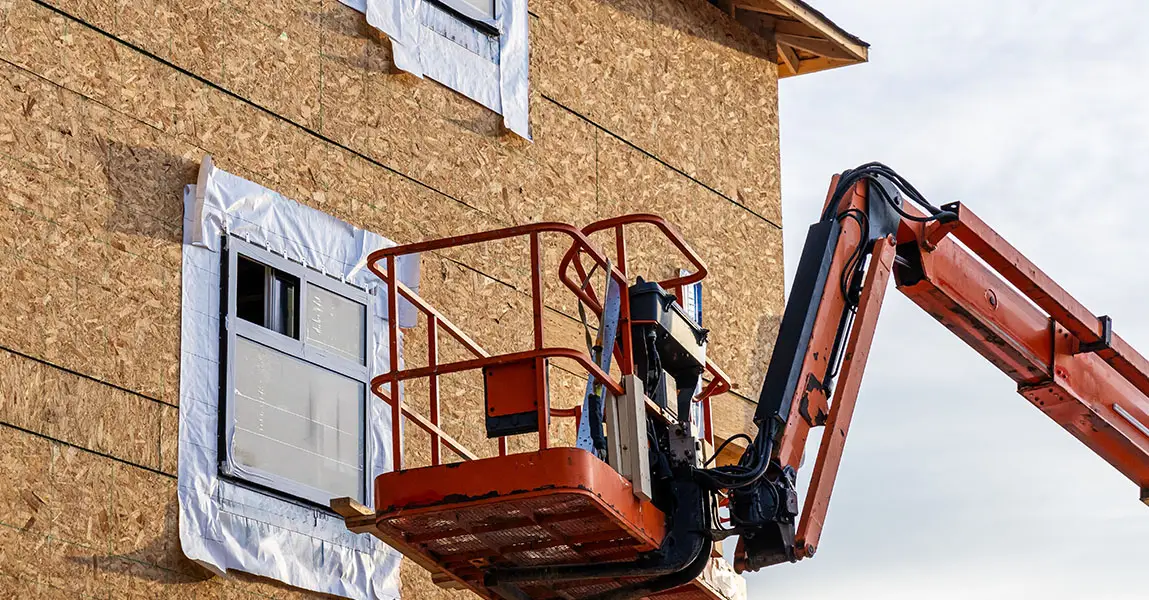Interior renovations rely on many moving parts. Among the most important are electrical and carpentry work. Each plays a unique role in shaping how a space functions and feels. When these trades are done well, they bring safety, comfort, and character to a home. When overlooked, they create lasting problems that cost more to fix later.
Electrical Work as the Foundation of Function
Every modern renovation requires some level of electrical work. We depend on safe wiring for lights, appliances, heating systems, and outlets. If circuits are overloaded or wires are poorly placed, the entire space suffers. That is why our team makes electrical planning the starting point of any design.
We also think ahead about how people will actually use the space. For example, having outlets in the right locations avoids extension cords running across floors. In the kitchen, planning circuits for high-demand appliances prevents tripping breakers. Similarly, in bedrooms and living rooms, outlets and lighting should match how furniture is likely arranged. These small details matter and save trouble later.
Safety Considerations in Electrical Upgrades
Mistakes in electrical work are not only inconvenient but also dangerous. Faulty wiring increases the risk of shocks or fires. Therefore, safety codes exist to ensure minimum standards are met. We follow these rules closely, but we also go further by checking conditions behind walls and ceilings. Old aluminum wiring, cracked insulation, or undersized panels are common issues in older homes.
By correcting these problems during a renovation, we make sure the home is safe for years to come. We also recommend modern upgrades like arc-fault protection and GFCI outlets in bathrooms and kitchens. These small additions protect families from hazards that may go unnoticed otherwise. In this way, electrical work is about more than powering lights—it is about protecting lives.
Carpentry Shapes the Space
While electrical work creates function, carpentry gives shape and form. The placement of walls, built-in storage, flooring, trim, and doors all fall into this trade. Good carpentry ensures the structure is sound and the details are clean. When done poorly, doors stick, floors creak, and gaps show up around trim. That is why careful craftsmanship is central to our renovations.
We also focus on how carpentry interacts with other trades. For instance, a wall must be framed with space for electrical boxes and wiring runs. Cabinets and shelving need sturdy anchoring into studs. Even small tasks like installing baseboards depend on surfaces being level and straight. Carpentry may not always be noticed, but it defines the quality of the finished space.
Custom Features and Finishing Details
One of the strengths of carpentry is the ability to customize. Unlike electrical, which has strict technical requirements, carpentry allows for creativity. Built-in desks, bookshelves, or seating areas can transform how a room is used. Trim profiles and wood finishes give character and style. Even something simple like adding wainscoting or crown molding changes the feel of a space.
At Envirotech, we believe these details should reflect the people who live in the home. Every cut of wood and every joint should have purpose. Strong carpentry does not just build walls; it builds a sense of place. When combined with solid electrical planning, these features make a renovation both functional and beautiful.
Coordinating Electrical and Carpentry Together
The best results happen when trades are coordinated. We do not think of electrical and carpentry as separate stages. Instead, we plan them together from the start. For example, if a wall will hold built-in shelving, we make sure electrical outlets and lighting are integrated. If recessed lighting is planned, carpentry ensures the ceiling structure allows proper placement.
This teamwork avoids conflicts and delays. It also means fewer holes cut later to fix oversights. Careful planning reduces waste, saves time, and leads to cleaner results. That is why we always align our electrical layouts with carpentry drawings before work begins. The process may take longer up front, but it prevents bigger issues down the road.
Energy Efficiency in Renovations
Modern electrical work is not only about safety and convenience but also efficiency. We use energy-saving lighting like LEDs and suggest smart controls that allow dimming or motion sensing. These features lower energy bills while improving comfort. Insulation and sealing work done by carpentry also play a part. Tight framing around windows, doors, and outlets reduces drafts and heat loss.
When combined, these efforts keep homes more comfortable year-round. They also help homeowners spend less on utilities. Thinking about energy efficiency at the renovation stage is far easier than adding improvements later. That is why we always bring it into our planning discussions.
Planning Renovations with Professionals
Many people wonder if they can take on parts of electrical or carpentry themselves. While simple tasks like painting may be safe for DIY, electrical work requires licensed knowledge. Even carpentry can be challenging if structural changes are involved. Mistakes in either area often cost more to repair than hiring a professional from the start.
That is why working with trained teams ensures better outcomes. We bring both trades together under one plan. Our role is not only to build but to anticipate issues and solve them before they appear. Anyone looking for professional renovation services Calgary can benefit from this level of coordination.
Tips for Homeowners During Renovations
When starting a project, homeowners can do a few things to make the process smoother. The first is to think about how they will use each room day to day. This helps guide where outlets, switches, and storage should go. The second is to gather examples of finishes or built-in ideas they like. Sharing these with the team early avoids last-minute changes.
Another tip is to walk through the space with the contractor before work starts. This allows both sides to see potential challenges, like uneven floors or hidden wiring. Communication is as important as the work itself. Clear expectations lead to fewer surprises and a smoother process overall.
Why Details Matter in Interior Renovations
It is often the small details that set a renovation apart. A switch placed at the right height, a door that closes smoothly, or trim that aligns perfectly all create a sense of quality. These details depend on both electrical and carpentry being done carefully. While they may seem minor, they are what people notice every day once the project is complete.
For us, quality means taking the time to check, measure, and adjust. We know that most homeowners only renovate a few times in their lives. That is why every step should leave them with a result that feels both lasting and well considered.
Call to Action
If you are planning a renovation and want a team that understands the balance between safety, structure, and design, reach out to us. Our team can discuss your goals, review your space, and create a plan that fits. Start by visiting our contact us page to arrange a consultation.
FAQ
What electrical updates are most important in older homes?
Upgrading the panel, replacing outdated wiring, and adding safety outlets like GFCIs in wet areas are the most important steps. These updates protect against fire and shock hazards.
How can carpentry improve small spaces?
Custom storage solutions such as built-in shelves or seating maximize use of small areas. Careful framing and trim work also make rooms feel more polished and open.
Do electrical and carpentry need to be done in a specific order?
Yes, electrical rough-in usually comes before carpentry finishes. However, both should be planned together to avoid conflicts in layout and design.
What role does carpentry play in energy efficiency?
Tight framing, sealing gaps, and ensuring windows and doors fit properly all help reduce energy loss. This makes heating and cooling more efficient.
Why should I hire professionals instead of doing the work myself?
Electrical work has strict safety requirements, and carpentry often involves structural elements. Professionals bring experience, code knowledge, and tools that ensure safe, lasting results.











